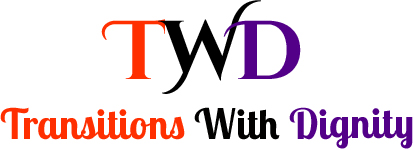TWD #2 Understanding the Challenges of Aging

Hello, dear readers. Today, let’s ponder on a timeless quote from Heraclitus, the Greek philosopher, “The only thing that is constant is change.” Reflect on the truth of this sentiment. Change is as inevitable as the rising and setting of the sun. Whether it’s starting a new job, moving to a new city, or dealing with various health challenges, change is a constant presence in our lives. Understanding the challenges of aging is a dance we all must learn the steps to.
The Gradual March of Time
And what bigger change do we face than the gradual march of time itself? We are living longer than ever. Our average life expectancy has skyrocketed from 64 years for men and 68 years for women in 1945, to 76 years for boys and 81 years for girls born in 2019 in North America. Indeed, we now bear witness to the largest population over 100 years old in the history of humankind!
Why Such Longevity?
Contributing to this longevity are numerous factors. Our health is significantly better than previous generations. Our diets are healthier, our food choices more diverse. Thanks to advances in farming and ranching technologies, fresh food can be delivered around the country and around the world. Fresh fruits and vegetables, lean meats, and fish grace our tables year-round without breaking the bank.
Our commitment to physical fitness has grown exponentially. The importance of staying active is now a widely accepted truth. Fitness centers dot our neighborhoods, online classes are readily available, and physical therapy is accessible to help us recover and maintain our active lifestyles.
Healthcare has improved leaps and bounds. Technologies and access to healthcare have advanced, enabling us to live more active, fulfilling lives. We can replace hips, hearts, and various other body parts. Even at 80 and 90, many seniors remain engaged in their lives. Mobility difficulties and sight challenges notwithstanding, many are still playing pickleball, dancing, driving, using computers, and volunteering in their communities.
Cultural Changes
And yet, amid these advancements, we must acknowledge that our culture has also changed drastically. In the past, American families would often stay in one community, with multiple generations living within miles of each other. The cultural shift of the 1960s, however, saw a rise in individual freedoms and opportunities for education, which led to more geographic dispersion. This geographic dislocation can create a sense of isolation in aging family members, particularly when they struggle to accept the need for an advocate in their later stages of life.
Emotional Turbulence and Life Challenges
Fast forward to today, and we find families grappling with the emotional turbulence of these transitions. The complexity of organizing, preserving, and distributing a lifetime’s worth of belongings and mementos can be overwhelming, not to mention emotionally charged.
In such situations, time and presence become invaluable resources. However, if your family can’t provide both, and there’s a tight timeline, don’t hesitate to seek the assistance of a trained, experienced, and insured professional. Their expertise can significantly reduce the stress of the transition and protect the overall health of your loved ones.
In the following blog posts, and on our website, you’ll find numerous resources to help you and your family navigate these transitions. Remember, change is inevitable, but it doesn’t have to be distressing. With the right support and resources, we can ensure that our loved ones, and ourselves, transition gracefully through life’s various stages.
Until next time, take care, stay strong, and remember – every change is a step on the journey of life.
Warmly,
Carol Phillips
Seniors Real Estate Specialist and Certified Probate Real Estate Specialist in Phoenix, Arizona
Author of “Transitions With Dignity, A Six Step Blueprint To Help Your Loved One Embrace Change”
Carol@CarolAzRealtor.com
CarolAzRealtor.com
TransitionsWithDignity.com
